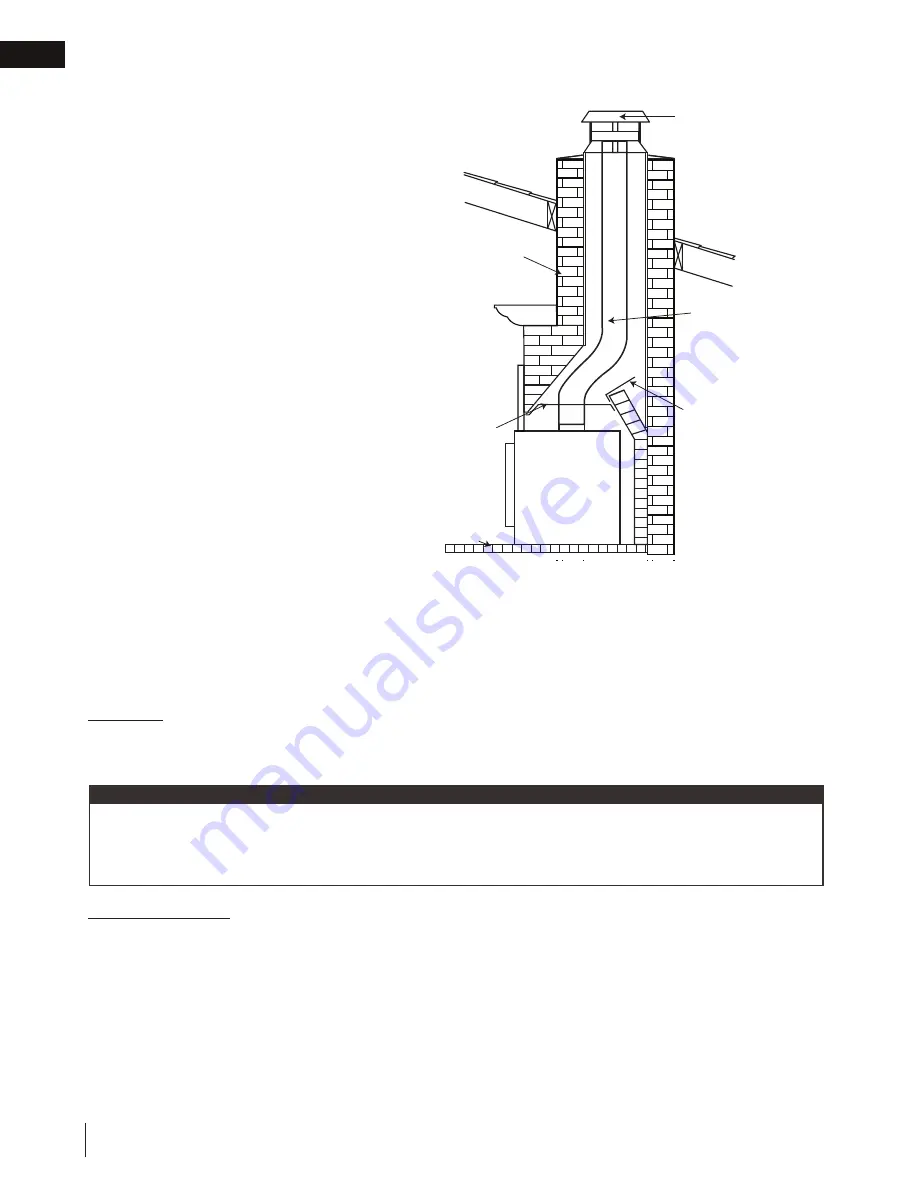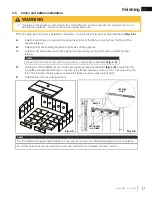
W415-2797 / A / 01.31.20
EN
12
installation
3.1
typical existing masonry
A.
Remove the fi replace damper or fasten it permanently open.
* We recommend the following method of sealing off the damper area around the liner.
B.
* Measure the throat of the fi replace and mark this shape on a piece of 24 gauge sheet metal (fl ue cover);
cut a six-inch (6.75" / 171mm) hole to lie directly below the fi replace fl ue opening. Allow two inches of
material for a fl ange on all sides and cut to these measurements. Bend down the fl anges. If you have never
done this before, it might be a good idea to make a cardboard pattern and test it fi rst. Fasten this fl ue cover
in position as high as possible with two masonry screws per side through the fl anges into the fi replace.
In Canada:
Install a listed 6" (152mm) diameter fl exible stainless steel liner from the top of the chimney to the insert
fl ue collar. Attach a stainless steel liner connector or elbow to the liner and insert onto the fl ue collar. Fasten with
three screws. Secure the top of the liner to the chimney cap using a liner support and chimney fl ashing. Cap the top
of the chimney liner assembly using an approved rain cap.
In the United States:
While it is not required, it is recommended that a chimney liner be installed that is continuous
from the insert to the top of the chimney, particularly when the insert is installed in a basement. For this type of
connection, use the “In Canada” installation instructions above.
If a continuous liner is not installed, a “direct fl ue connection” must be made. The direct fl ue connection requires a
non-combustible connector that extends from the insert into the chimney fl ue liner and also that the installed fl ue
cover be sealed below the entry point of the connector to prevent dilution of combustion products in the chimney
fl ue with air from inside the house. Cap the top of the chimney using an approved rain cap.
The following installation requirements must be observed when installing solid fuel burning inserts into factory built
fi replaces.
You can install your appliance using your existing masonry
chimney. To do so, use the following guidelines. If you are using a
masonry chimney, it is important that it be built in compliance with
the specifications of the Building Code in your region. It
must normally be lined with fire clay bricks, metal or clay
tiles sealed together with fire cement. (Round flues are
the most efficient).
FOLLOW MANU-
FACTURER’S
INSTRUCTIONS
FOR MAXIMUM
LINER EXTENSION
ABOVE CHIMNEY
FLOOR
PROTECTOR
DAMPER PLATE
REMOVED OR
FASTENED IN
OPEN POSITION
SEAL WITH
NON-COMBUSTIBLE
MATERIAL
MASONRY
CHIMNEY
MUST HAVE
STRUCTURAL
INTEGRITY
LISTED
CHIMNEY
LINER
This fi replace insert must be installed with a continuous chimney liner of 6” (152mm) diameter extending from
the fi replace insert to the top of the chimney. The chimney liner must conform to the Class 3 requirements of
CAN/ULC-S635, Standard for Lining Systems for Existing Masonry or Factory-Built Chimneys and Vents, or
CAN/ULC-S640, Standard for Lining Systems for New Masonry Chimneys.
note:













































